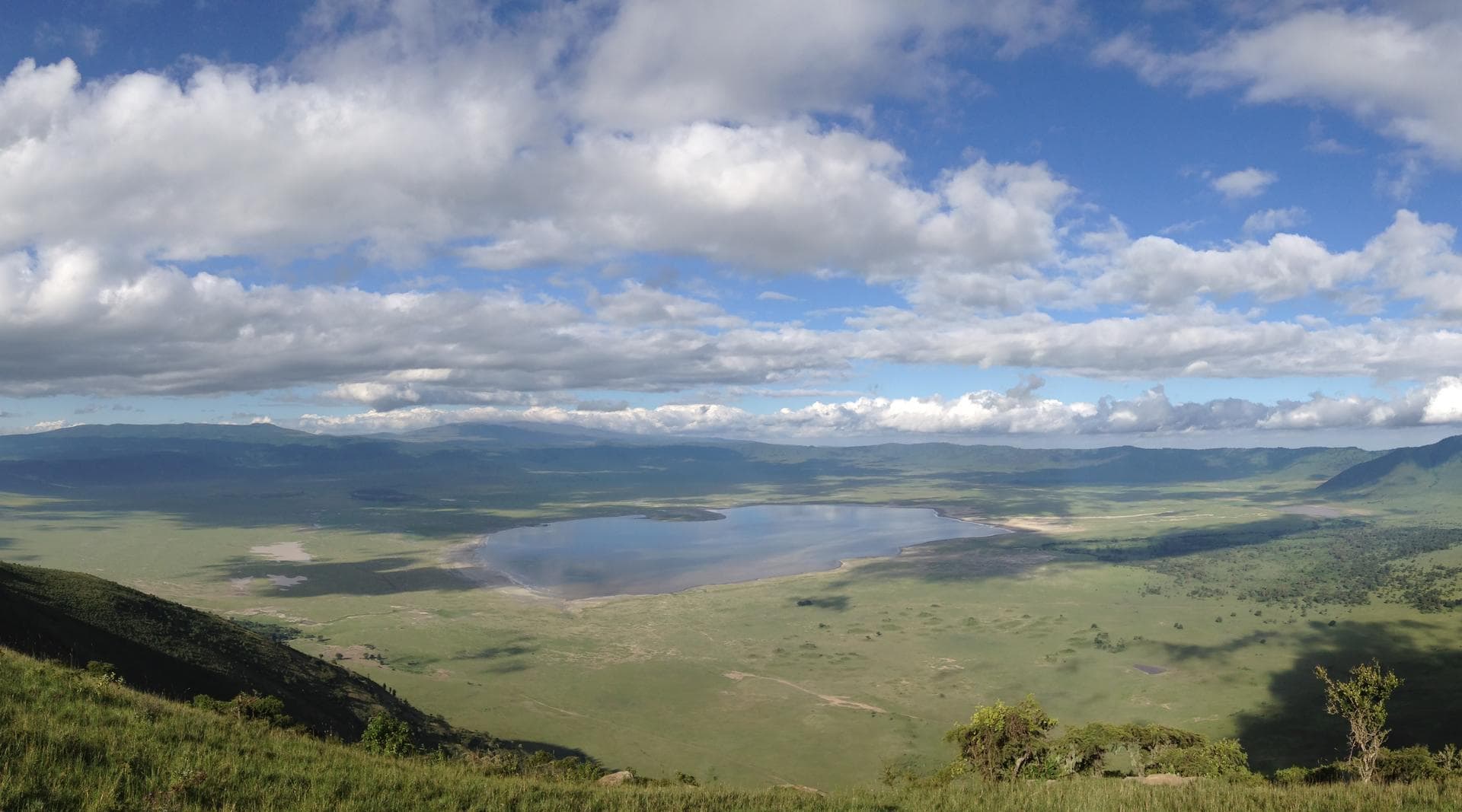A UNESCO World Heritage Site and one of the Seven Natural Wonders of Africa, Ngorongoro Crater is the largest unflooded, unbroken caldera in the world and home to a high concentration of wildlife, which makes game drives a thrilling experience. While here, you’re able to spot the Big Five. Lions, leopards, elephants, buffalo, and rhinos are all located here – in fact, this is one of the best places to see the endangered black rhino. The high density of wildlife is thanks to the diverse ecosystems within the crater walls.
Ngorongoro Crater is a must-visit while on a Tanzania safari, as it offers one of the best opportunities to see a wide variety of wildlife in a single day, all against the backdrop of breathtaking landscapes.
Top Destinations in the Ngorongoro Crater
There are a variety of ecosystems that make Ngorongoro Crater exceptional for a Tanzania safari:
Ngorongoro Crater Floor: The Main Wildlife Hotspot
The crater floor – with a radius of 260 square kilometres – is the main attraction, home to abundant wildlife and beautiful nature views. Open grasslands make up most of the crater floor; here, elephants, black rhinos, buffalos, zebras, warthogs, and wildebeest wander freely.
There are a large number of prey species that predators can thrive on. Lions (the crater has arguably one of the highest densities of this big cat in the world), hyenas, and leopards can all be found while on a Ngorongoro Crater safari.
Lerai Forest: Ideal for Birdwatching
The Lerai Forest is a lush ecosystem within the crater, ideal for birdwatching. This habitat provides the perfect area for many bird species to get food and build their nests. Some bird species here include hoopoes, cuckoos, and weavers.
During a Ngorongoro safari in this ecosystem, you may also spot massive bull elephants, and if you look up in the trees, you may just see a leopard.
Lake Magadi: A Flamingo Paradise
“Magadi” means soda in Swahili; this alkaline lake attracts many bird and animal species, including flamingos. The abundant blue-green algae found here is the main food source of these pink birds.
This lake’s swamp areas host hippos, while other animals will come to the lake to drink and hunt. While on a Ngorongoro Crater safari, you may spot golden jackals on the outskirts of the lake waiting to pounce on flamingos.
When’s the Best Time to Go on Safari at Ngorongoro Crater?
June to October is the dry season, which is the best time for wildlife viewing. The animals congregate near water sources as water becomes scarcer, and vegetation is less dense, making game spotting much easier. The rainy season from December to February is still a good time to visit – the lush landscapes are a sight to behold, and it’s calving season for many animals, so this time of the year has the cuteness factor.
It also presents great birdwatching opportunities; from November to May is the perfect time to see large swathes of flamingos at Lake Magadi.
Animals Found in Ngorongoro Crater
Elephants, lions, leopards, buffaloes, and critically endangered black rhinos are all found here, making Ngorongoro a Big Five destination. You’ll also find large populations of wildebeest, zebra, and gazelle, making it a prime area to witness interactions between predators and their prey. Besides lions and leopards, other predators that hunt these grounds include hyenas and cheetahs.
The Ngorongoro Conservation Area hosts over 500 species of birds – migratory and resident – making it a fantastic birding safari destination.
How to Get to Ngorongoro Crater
By Air
You can fly into Kilimanjaro International Airport and transfer to the regional Arusha Airport, as it’s the gateway to the Ngorongoro Crater.
By Road
Once you’re at Arusha Airport, it’s just a two-and-a-half-hour road transfer to the Ngorongoro Conservation Area.





















